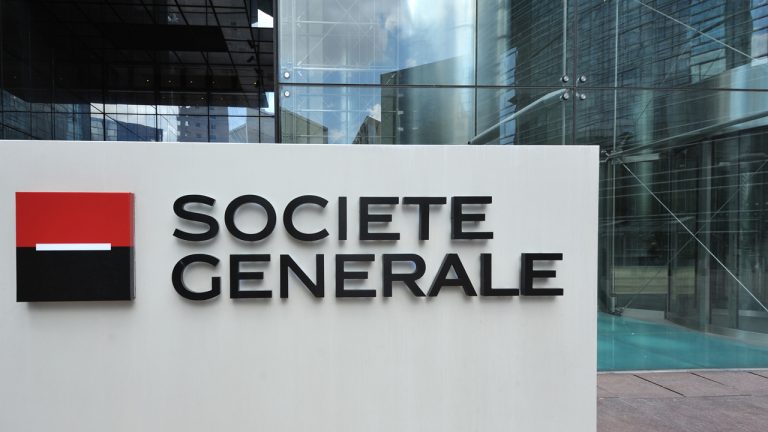 A former security engineer, who stole digital assets valued at more than $12 million from two decentralized exchanges, has received a three-year prison sentence. In what has been characterized as the “first-ever” conviction for a smart contract hack, the U.S. Judge also ordered the ex-engineer to forfeit roughly $12.3 million. Ex-Engineer Sentenced to Three Years […]
A former security engineer, who stole digital assets valued at more than $12 million from two decentralized exchanges, has received a three-year prison sentence. In what has been characterized as the “first-ever” conviction for a smart contract hack, the U.S. Judge also ordered the ex-engineer to forfeit roughly $12.3 million. Ex-Engineer Sentenced to Three Years […]
Stablecoin issuer Circle just rolled out a new smart contract functionality that enables holders of the BlackRock USD Institutional Digital Liquidity Fund (BUIDL) to convert their shares into USDC. The BUIDL is asset management giant BlackRock’s first tokenized fund that invests in cash, U.S. Treasury bills and repurchase agreements. Shares are represented by a blockchain-based […]
The post Investors in BlackRock’s New Tokenized Assets Fund Can Now Transfer Their Shares To Circle for Stablecoin USDC appeared first on The Daily Hodl.
Circle announced the launch of a new platform that uses pre-vetted templates to make building Web3 apps easier for traditional developers.
Stablecoin issuer Circle has launched a new tool that it says will allow developers to “remove the complexity” of building Web3 apps, according to an announcement and accompanying social media post on October 19.
Called “Smart Contract Platform,” the new tool allows developers to deploy smart contracts using a set of pre-vetted code templates and either a console or REST APIs, making it potentially easier for traditional Web2 programmers to use.
Circle also released a Gas Station tool that lets developers pay for their users’ gas fees, which they claim may make onboarding users easier.
1/ Introducing Gas Station and Smart Contract Platform - built for #devs & available in beta!
— Circle (@circle) October 19, 2023
Our two new #Web3 Services products provide solutions for devs & businesses to remove cost, complexity & friction for app users. Let’s dive in to learn how our Web3 services continues… pic.twitter.com/gZnpAvYepT
When developers deploy smart contracts, they usually rely on Web3 developer tools like Truffle or Hardhat to perform the deployment. When using these tools, contracts have to be written in Solidity, a language that some conventional programmers do not know very well. They also require developers to create and run blockchain deployment or “migration” scripts, a process that some Web2 developers are unfamiliar with.
According to its documents, the Circle smart contract platform provides a set of pre-vetted templates that can be used to create a variety of smart contracts. For example, developers can use the templates to produce contracts for non-fungible tokens (NFTs), blockchain loyalty programs, and interactions with Uniswap or other decentralized finance projects or with Circle’s stablecoin contracts. This implies that a developer can use the platform to avoid having to create an entire Solidity contract from scratch, which may make it easier for Web2 developers to start building in Web3.
Related: Account abstraction will drive a billion users to Web3: ConsenSys exec
Once the contract is created, the developer can deploy it to Polygon using a “no-code” console provided as part of the platform, the announcement stated. This implies that the developer does not need to write a “migration” script to deploy the contract when using Circle’s platform. According to the announcement, the “no-code” console is not yet available for Ethereum or Avalanche.
However, the platform also provides a set of representational state transfer application programming interfaces (REST APIs) for use on these networks, and developers can use these to deploy or interact with their contracts. REST APIs are the standard means that developers use to interact with Web2 databases, making them more familiar to developers that have never built Web3 apps.
Circle plans to make both the “no code” console and REST APIs available for more networks in the future, the announcement stated.
According to the platform’s documents, developers can also use it to deploy a custom contract that doesn't use one of the templates, although in this case they must provide the compiled bytecode for it. Still, even in this case, the developer avoids needing to write a deployment script, since this can be handled either by the console or REST APIs.
Circle also announced a second developer feature called “Gas Station.” It allows Web3 app developers to pay for their users’ gas fees. This potentially allows developers to onboard users more easily, as it prevents users from needing to pre-fund their wallets with the native coin of a network.
Gas Station uses Ethereum’s account abstraction feature to implement these gas-free transactions. The Grab super-app has already implemented the new feature, allowing users to pay no gas when redeeming NFT vouchers, the announcement stated.

Gitcoin’s project lead said the snafu has resulted in nearly half a million in funds being forever locked in a one-way contract address.
Crypto developer platform Gitcoin has admitted to losing approximately $460,000 of Gitcoin (GTC) tokens after mistakenly sending the funds to an unrecoverable contract address.
On Oct. 6, project lead “CoachJonathan” posted details of the incident on the Gitcoin governance forum. He said the transfer of GTC from the treasury was intended for a merchandise, memes, and marketing budget proposal.
However, rather than going to a multisignature address, it instead went to a GTC token contract instead.
“This has rendered the funds stuck in the contract, with no way of recovering them,” he lamented.
A total of 521,440 GTC tokens were lost in the snafu. The coin was trading at just below $0.90 at the time, making the dollar loss an estimated $461,000.

Following the transfer, Gitcoin core developers were contacted to explore whether the contract has a withdraw function or was upgradeable. It was confirmed that neither was an option, so the funds have been flagged as lost.
In light of the incident, the team has shared plans to ensure such an error never happens again and create clearer accountability if there is another incident.
“Large token holders and multisig signers have a responsibility to be extra diligent when it comes to handling funds that do not belong to them (myself included),” he concluded.
Gitcoin researcher Umar Khan commented on the forum that the DAO could consider the lost tokens a reduction in GTC supply rather than a loss of treasury funds.
Observers said “Crypto UX is sadly really broken if this can happen,”
It seems that @gitcoin mistakenly sent ~521k $GTC (~$471k) to the token address instead of funding a workstream address
— Lefteris Karapetsas | Hiring for @rotkiapp (@LefterisJP) October 7, 2023
That is really sad to see. Effectively burning half a million $
How come none of the voter/signer noticed? Crypto UX is sadly really broken if this can happen pic.twitter.com/DhI7lPaViY
Related: Crypto.com accidentally transferred $10.5M to client instead of $100 refund
Gitcoin is a platform to fund Web3 builders looking for open-source work. Project owners and developers can publish their projects while donors can browse a list of projects and choose what they would like to fund.
The price of GTC has fallen 1.1% over the past 24 hours and was trading at $0.889 at the time of writing. Moreover, the token is down a whopping 99% since its May 2021 all-time high of $89.62, according to CoinGecko.
Magazine: 3AC fugitives in disarray as OPNX faces new peril: Asia Express

ConsenSys rolls scaling network Linea, which delivered faster throughput and 15 times lower transaction costs than Ethereum’s layer 1.
The Ethereum ecosystem welcomes another layer-2 scaling solution as ConsenSys begins onboarding partners to its Linea network, which has produced significant scaling milestones in testing.
Linea is an Ethereum layer-2 scaling network that allows developers to build or migrate decentralized applications for Ethereum. It operates using zero-knowledge proofs and is Ethereum Virtual Machine (EVM) equivalent, meaning its applications can seamlessly interact with the Ethereum blockchain.
The network went through a lengthy testnet period which saw some 5.5 million unique wallets carry out over 46 million transactions. ConsenSys outlined improvements to Linea’s performance, transaction costs and user experience through its testing period.
The gradual alpha release began on July 11 with more than 100 partners and ConsenSys touts faster throughput and 15 times lower transaction fees than those executed on Ethereum’s mainnet.
Linea also integrates with ConsenSys’ Ethereum browser wallet MetaMask, giving Linea users access to its token bridge, swap and buy functionality.
ConsenSys founder and CEO Joseph Lubin highlighted the number of layer 2 Ethereum scaling protocols and solutions as a key component driving the development of Web3 applications and functionality:
“With the Merge to Proof of Stake and the broad traction of the rollup-centric roadmap, Ethereum L2s are set to play a crucial role in making great advances in scalability and usability.”
The announcement shared with Cointelegraph highlights decentralized finance (DeFi) applications migrating to Linea to tap into fast finality, capital efficient bridge and inherited security from Ethereum’s mainnet.
Meanwhile the network also offers lower gas fees, high throughput and low latency, which are key components needed to power nonfungible tokens, blockchain gaming and social applications.
Related: Are ZK-proofs the answer to Bitcoin’s Ordinal and BRC-20 problem?
ConsenSys also launched its Linea Ecosystem Investment Alliance (EIA), which will see more than 30 venture capital firms lend capital and advisory assistance to ecosystem builders.
The launch of Linea’s alpha mainnet will make use of safeguards to protect users, DApps and the network itself. This includes only allowing launch partners the execute calls to the network over the first week.
ConsenSys intends to open up the network during ETHCC in France from July 17, while some limits on withdrawals may be instituted over the first 90 days. The firm will carry out a bug bounty and monitor system performance before fully opening LIna to end users.
Ethereum layer 2's have been a major talking point in 2023. Layer 2 development firm Polygon also tooks its zkEVM network public in March 2023. Meanwhile Starknet, whose founder Eli Ben-Sasson pioneered zk-proofs, has focused on increasing throughput of its network this year.
Collect this article as an NFT to preserve this moment in history and show your support for independent journalism in the crypto space.
Magazine: ZK-rollups are ‘the endgame’ for scaling blockchains: Polygon Miden founder
 According to Societe Generale-Forge (SG-Forge), a regulated subsidiary of Societe Generale Group, the company has launched a stablecoin pegged to the euro and issued on the Ethereum blockchain. During the launch announcement, SG-Forge’s CEO stated that a stablecoin “built under a robust banking-grade structure” will be a key element to increase trust and confidence in […]
According to Societe Generale-Forge (SG-Forge), a regulated subsidiary of Societe Generale Group, the company has launched a stablecoin pegged to the euro and issued on the Ethereum blockchain. During the launch announcement, SG-Forge’s CEO stated that a stablecoin “built under a robust banking-grade structure” will be a key element to increase trust and confidence in […] A new token named after Pepe the Frog, the infamous meme, and cartoon character created by Matt Furie, has entered the meme coin economy. The token is called Pepe (PEPE), and at the time of writing, it has become the sixth-largest meme coin asset in terms of market capitalization, valued at just over $130 million. […]
A new token named after Pepe the Frog, the infamous meme, and cartoon character created by Matt Furie, has entered the meme coin economy. The token is called Pepe (PEPE), and at the time of writing, it has become the sixth-largest meme coin asset in terms of market capitalization, valued at just over $130 million. […] According to several reports, a bug introduced to the decentralized exchange (dex) protocol Sushiswap’s smart contract has resulted in more than $3 million in losses. The blockchain and smart contract security firm Peckshield explained the exploited contract was “deployed in multiple blockchains.” Dex Platform Sushiswap Suffers From Smart Contract Exploit Over the weekend, the dex […]
According to several reports, a bug introduced to the decentralized exchange (dex) protocol Sushiswap’s smart contract has resulted in more than $3 million in losses. The blockchain and smart contract security firm Peckshield explained the exploited contract was “deployed in multiple blockchains.” Dex Platform Sushiswap Suffers From Smart Contract Exploit Over the weekend, the dex […]